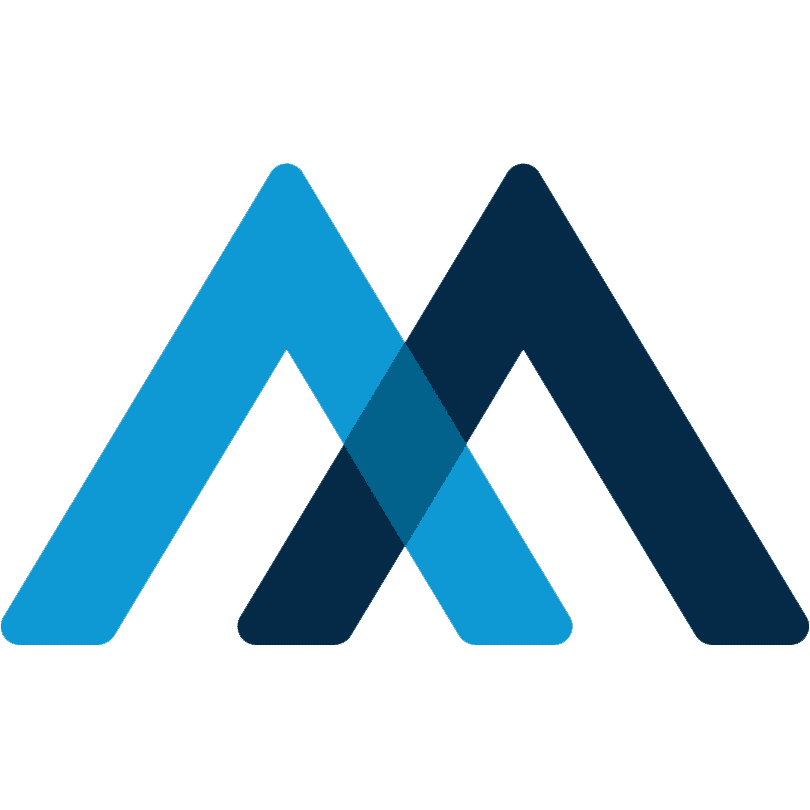What Is Nose Surgery (Rhinoplasty)?
Rhinoplasty, or nose surgery, is one of the most common plastic surgery procedures performed. During a rhinoplasty, the surgeon is able to reshape, reduce or augment a patient’s nose to improve appearance.
A rhinoplasty may be performed as a reconstructive procedure to correct a birth defect, a repair surgery to remedy an injury like a broken nose, or simply for cosmetic reasons. Sometimes the procedure is performed in conjunction with endoscopic sinus surgery for patients with ongoing sinusitis or with a septoplasty, a procedure to correct a deviated septum. In these cases, the operation effectively treats health and breathing problems, as well as improving the patient’s appearance.
The Benefits Of A Rhinoplasty
What is the value of liking the nose you see in the mirror every morning? Or what’s the value of being able to sleep without constriction in your nasal passages? Cosmetically, Dr. Daneshrad can remove a bump on the bridge or reshape the tip. He can reduce flared nostrils or narrow a wide nose. The changes can be very subtle or more involved, depending on what you would like to change. The beauty of this procedure is that Dr. Daneshrad and you work together as a team to incorporate the changes you seek to make. This is a very satisfying procedure. Rhinoplasty has several specific goals. Some facilitate breathing as well as improve facial appearance. During a rhinoplasty, the surgeon may make your appearance more pleasing to you by:
- Removing a hump on your nose
- Modifying the bridge of your nose
- Reshaping the tip of your nose
- Reshaping or resizing your nostrils
- Repairing your nose after an injury
- Increasing or decreasing the size of your nose

What Are The Risks And Possible Complications With Nose Surgery?
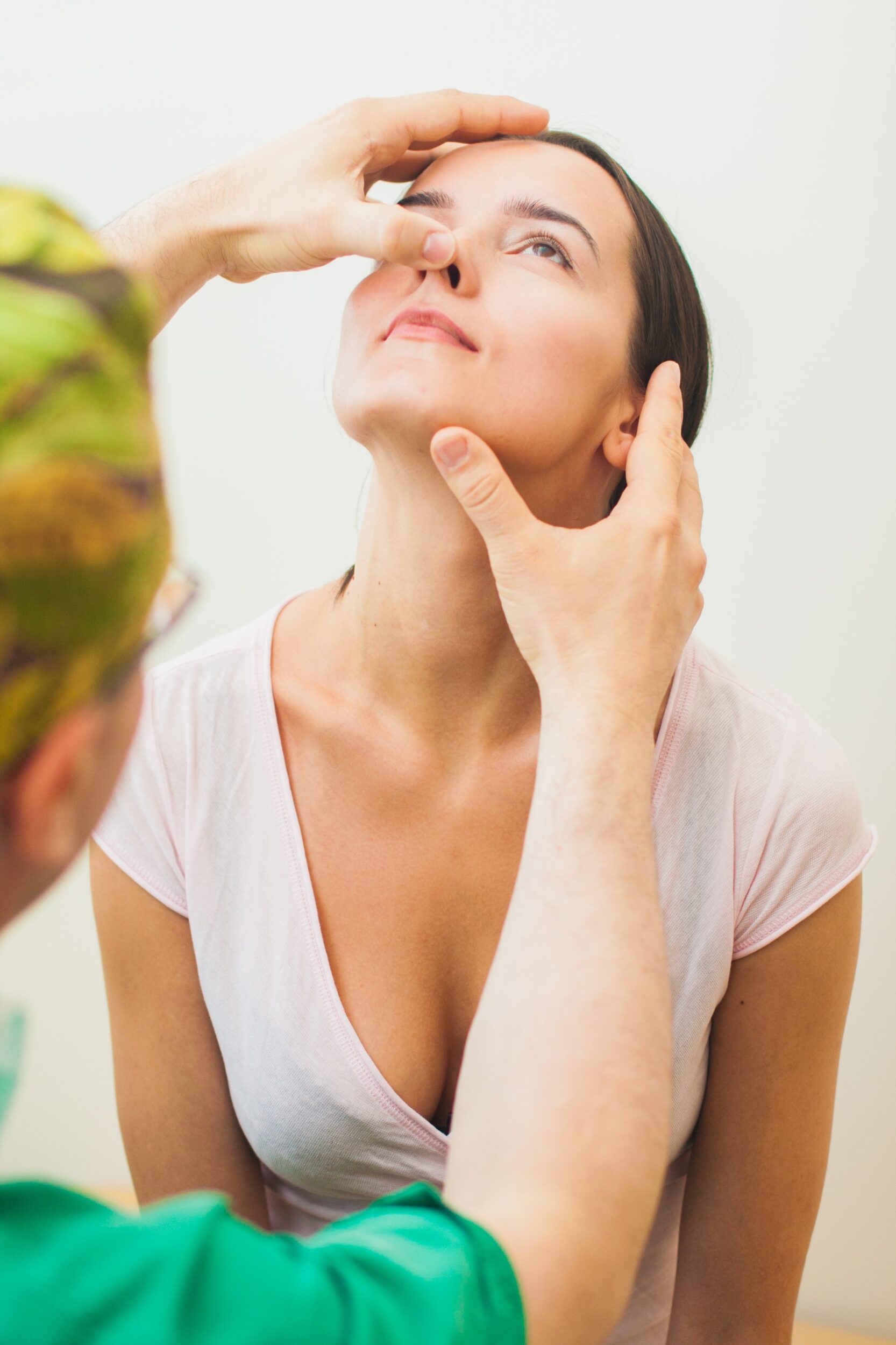
Rhinoplasty with Dr Daneshrad is major surgery, so it includes the various possible risks associated: excessive bleeding, infection, poor wound healing, and possible reaction to anesthesia. With this surgery, there are also specific risks/complications:
- Recurring nosebleeds
- Difficulty breathing through your nose
- Permanent numbness in and around your nose
- Possibility of an uneven-looking nose
- Pain, discoloration, or swelling that may persist
- Scarring
- Septal perforation
- Dissatisfaction with the final results
Who Is A Good Candidate For Rhinoplasty?
Having a nose you like is a critical part of how you see your face. Because of that, most rhinoplasty procedures performed by Dr. Daneshrad are cosmetic. But many patients also come in to correct a former injury or improve their breathing. These are general reasons most of our patients opt to have nose surgery:
Cosmetic reasons — While there isn’t an agreed-upon “perfect” nose, most of us know when there are features to our nose that we don’t like. These are common reasons for cosmetic nose surgery:
- Your nose has a bulbous tip.
- Your nose droops downward.
- Your nose has a prominent bump on the bridge.
- Your nose seems wider than is proportional.
- Your nose is not symmetrical.
- Your nose is crooked from being broken.
- Your nose is too big, dominating your face.
- Your nostrils are excessively flared or open.
Injury — There are plenty of ways you could have damaged your nose previously. Whatever the reason, if you didn’t opt to have your nose fixed then, it could be crooked now. Dr. Daneshrad can fix that.
Breathing issues — Congenital breathing problems are not all that rare. Rhinoplasty can improve your breathing. This can changes problems such as sleep apnea.
Am I A Good Candidate For A Rhinoplasty? »
In order to be a candidate for a rhinoplasty procedure you must meet the following criteria:
- The nose must be finished with any growth. For women, the nose and face are completely developed by age 15 or 16. For men, it’s around 17 or 18.
- Be in overall good health
- Not be a smoker
- Have realistic expectations about the outcome of the surgery

What Should I Expect At A Nose Surgery Consultation?
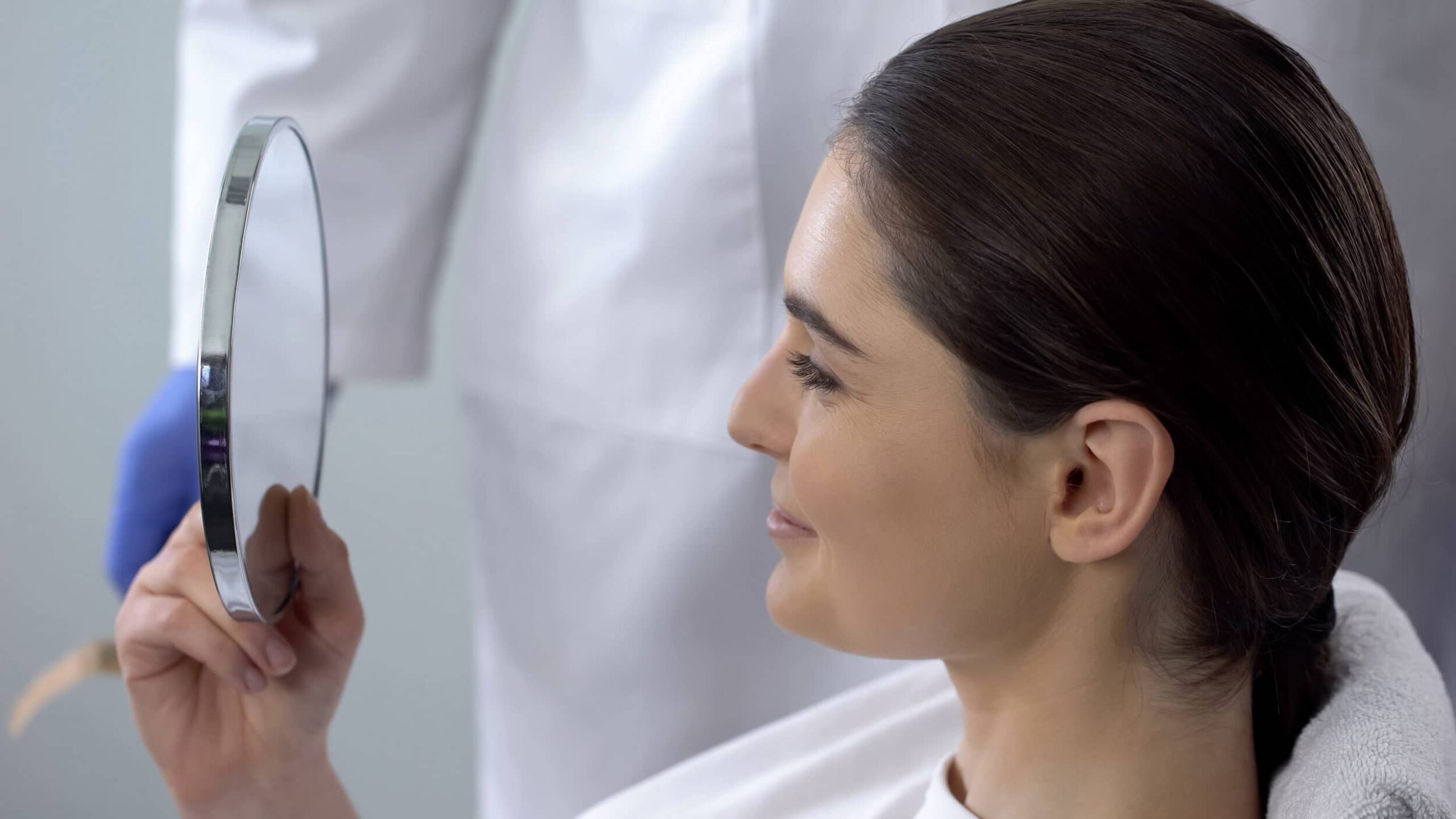
Rhinoplasty is a delicate procedure, where the experience of your surgeon is critical to your results. That’s why Dr. Daneshrad frequently addresses problems with patients who had previous surgery from other practitioners with revision rhinoplasty. His practice’s focus on only nasal surgeries is beneficial for his patients.
During your consultation with Dr. Daneshrad, the two of you will discuss your surgery options, including whether he will use an “open” or “closed” method. This will depend on the extent of the changes that you desire. In both methods, the soft tissue is then lifted up and off up the underlying bone and cartilage.
How Is A Rhinoplasty Performed?
Surgeons use one of two techniques when performing nose surgery. In a closed rhinoplasty, incisions are made within the nostrils. In an open rhinoplasty, the incision is made across the columella, the tissue between the nostrils.
With both methods, the surgeon gently lifts the soft tissues covering the nose. The surgeon sculpts the bone and cartilage to the desired shape. This provides access to those structures to shave off bumps or otherwise reshape the bone and cartilage.
Any additional cartilage needed to augment the nose can often be taken from the septum, ears, and ribs, or he can use silastic implants. If the patient has a deviated septum, the surgeon will adjust the septum and the inner structures of the nose to improve breathing. Then the tissues are re-draped and stitched closed. If the patient desires nostril reshaping, this is done as the final stage of rhinoplasty.
When a nose needs to be made smaller, it’s necessary to break the nasal bones. Breathing problems are usually addressed by working with the septum and the inner structures to open the airways.
How Long Does Rhinoplasty Take?
It usually takes from 1 to 2 hours to complete.
Is Nose Surgery Painful?
You don’t feel anything during the procedure, thanks to anesthesia. Rhinoplasty is an outpatient procedure performed under IV sedation or general anesthesia.
What Our Patients Have To Say
"The receptionist was superwoman! She does it all appts, insurance verifications and checking out pts., all with a pleasant attitude! Dr. Daneshrad is as nice as he looks in his profile pic. He comes out to the waiting room to greet his patients! In all my 40+ years of seeing doctors, this was a first and it set the tone for the rest of my visit! I felt respected and listened to. It is so refreshing to find a doctor who makes you feel part of your healthcare treatment. A++. Highly recommended!!"
"Dr Daneshrad and his staff were efficient and pleasant. I found this office by checking reviews just like mine and was not disappointed. I would highly recommend this clinic to others. No wait time, pleasant front office, and knowledgeable Dr. what else can you ask?"
The Difference Between An Open And Closed Rhinoplasty
In open rhinoplasty, Dr. Daneshrad makes an incision on the columella, the strip of skin between your nostrils. In closed rhinoplasty, all incisions are made within the nose. In both methods the soft tissues are lifted from the underlying support and the bone and cartilage are sculpted as needed. The open method, as you would expect, offers more flexibility for larger corrections, especially to the bridge. It does leave a tiny scar on the columella, but it is barely visible just a few weeks after your surgery.
What Is Revision Rhinoplasty?
Revision or secondary, rhinoplasty corrects deformities caused by a previous operation on the nose. It is a more difficult procedure to perform than primary rhinoplasty because there is less cartilage to work with and there may be scarring or tissue contracture. When performed by a highly skilled plastic surgeon, however, a revision rhinoplasty can improve both the appearance and the function of the nose.
What Is The Recovery From A Rhinoplasty Like?
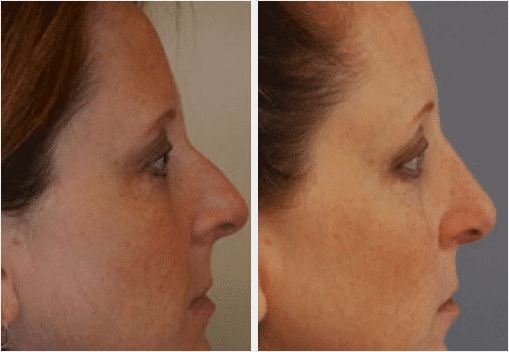
Patients are often surprised that their recovery from nose surgery with Dr. Daneshrad isn’t as difficult as they expected. Immediately following your surgery, you’ll have a splint on your nose to protect its new shape. The splint will come off in about one week, but your face will feel puffy and there will be swelling all around your eyes and nose. We’ll provide a cold compress and its diligent use will help with your swelling. For the first few days after your surgery, you’ll need to keep your head elevated and as still as possible.
You’ll have some steady aching type of pain and possibly dull headaches, but these resolve fairly quickly. Obviously, blowing your nose is out of the question. It will take from 10 to 14 days for the majority of the swelling and bruising to run its course. If you wear glasses, they will need to be taped to your forehead for up to seven weeks to alleviate any weight on your new nose. Strenuous exercise or heavy lifting will have to wait for at least one month.
How Long Does Rhinoplasty Take To Heal?
The initial bruising and the vast majority of the swelling from a rhinoplasty resolves after 2 weeks. The nasal bones will take up to 6 months to fully set and placing any glasses on the nose should be avoided.
Are There Any Restrictions In The Weeks Following A Rhinoplasty? »
While you will be able to resume normal activities about a week after surgery, you will have to protect your nose while it heals by observing the following directives during the post-operative period:
- Avoid strenuous activities
- Take baths instead of showers
- Avoid blowing your nose
- Avoid constipation
- Avoid making exaggerated facial expressions
- Brush your teeth gently
- Avoid pulling clothing over your head
- Use sunscreen of SPF 30 or higher
- Limit dietary sodium
- Do not use ice packs
How Long Before I Will See My Final Results After Nose Surgery?
This procedure demands some patience when waiting to see how your nose will appear in the end. Due to the recurring swelling, it can take up to six full months for a patient to fully realize their new nose. This varies from patient to patient. It can be frustrating because swelling can sometimes return in the evening, even weeks after your surgery. Regardless of the final timeline, rhinoplasty is one of the most satisfying cosmetic surgeries, as most patients feel that their new noses change the overall appearance of the face for the rest of their lives.
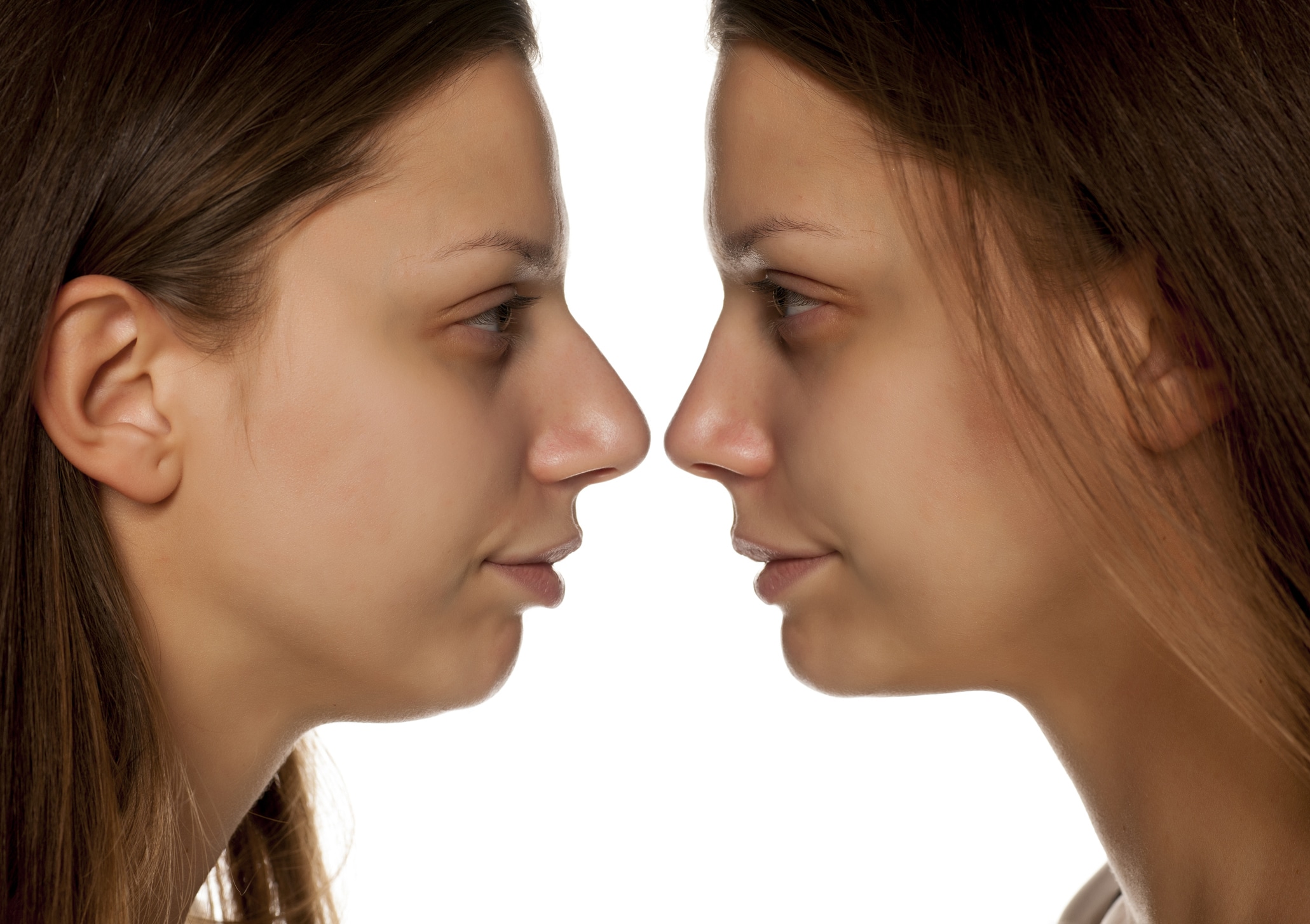
Are Most Patients Pleased With The Results Of A Rhinoplasty?
Patients with realistic goals for rhinoplasty are generally very happy with the new shape of their nose. The exact results depend on your nasal bone and cartilage structure, your facial shape, the thickness of your skin and your age. While you will look and feel fine within a week or two, you may have minimal swelling for as long as a year after the rhinoplasty procedure. Although your appearance may not be absolutely optimal until a year has passed, you will more than likely be extremely pleased with the results of your nose surgery soon after the procedure.
Rhinoplasty FAQs
How Do I Choose The Right Rhinoplasty Surgeon?
How Much Does A Rhinoplasty Cost?
Will Insurance Cover My Rhinoplasty?
Elective rhinoplasty to make cosmetic changes is not covered by insurance. However, if any portion of the procedure is targeted to improve function or the underlying nasal structure, the procedure with Dr. Daneshrad may be partially or fully covered. We work with your insurance company to gain the highest amount of reimbursement.
Do I Need General Anesthesia For A Rhinoplasty?
To learn more about rhinoplasty and to find out if nose surgery is right for you, contact the Daneshrad Clinic at 310.453.6500 or complete an online contact form and our office will be in touch with you. We proudly serve patients from Santa Monica, Torrance, Los Angeles and surrounding areas, including Brentwood, Malibu, Culver City, Marina Del Rey, Venice, Pacific Palisades, Manhattan Beach, Redondo Beach, and Palos Verdes.

